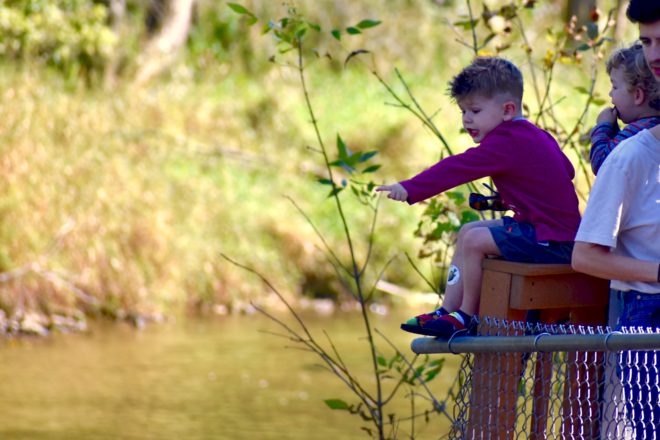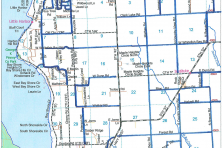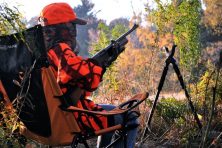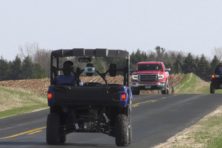Wild Things: ATV, Boating Accidents on the Rise
- Share
- Tweet
- Pin
- Share

2021 has been a deadly year on the land and in the water in Wisconsin
by KEVIN NAZE, [email protected], Peninsula Pulse contributor
Eighty-five people died in Wisconsin recreational vehicle accidents last year – more than were accidentally shot and killed while hunting during the past 40 seasons combined.
Last year alone, 34 people died in All-Terrain Vehicle (ATV) accidents – four more than in all the fatal hunting accidents during the past 25 years. Twenty-five others were killed in boating accidents last year, and 26 more – 13 in each activity – died while snowmobiling or using Utility Task Vehicles (UTVs) in Wisconsin.
These figures come from the Department of Natural Resources’ recently released 2021 Safety Education and Enforcement Report, and the number of fatal hunting accidents was compiled by researching annual DNR hunting-season reports.
Topped by rapid growth in ATV and UTV use, Wisconsin registered a record of more than 1.3 million recreational vehicles last year: 629,399 boats, 331,869 ATVs, 210,229 snowmobiles, 134,718 UTVs and 6,454 off-highway motorcycles, or OHMs.
UTV and OHM registrations have more than doubled during the past five years, and ATV use is the highest on record – up nearly 17,000 since 2017. Boating registrations are up more than 4,500 during the past five years, while snowmobile registrations – highly dependent on winter weather – dropped during three of the past five years.
Not included in the boat totals are manually propelled boats without motors or sails, sailboats shorter than 12 feet without motors, and vessels registered in another state that use Wisconsin waters for fewer than 60 continuous days.
Alcohol use and excessive speed topped the list of factors in fatal ATV, UTV and snowmobile crashes, and reckless behavior by passengers or operators was the top factor in fatal boating accidents.
Thirty of the 34 people who died in ATV accidents and all 13 who died in UTV accidents were not wearing helmets; similarly, 21 of the 25 who died in fatal boating accidents were not wearing a personal flotation device. Sixty-nine percent of those who died in UTV accidents weren’t wearing seat belts.
Helmets were worn by all 13 who died in snowmobile accidents. In addition to alcohol use, excessive speed and sharp turns were factors in most of those.
The majority of ATVs – also known as “quads” or “four-wheelers” – are designed for a single rider and are almost exclusively used for recreation. UTVs – sometimes called “side-by-sides” – are designed with a cabin for two to four riders, and they’re typically used for both work and recreation.
The DNR’s report also showed that there were 152 nonfatal ATV accidents reported, with 177 people injured; 115 nonfatal snowmobile accidents (101 injured); 94 with boats (61 injured); 93 with UTVs (134 injured); and four with OHMs (four injured).
Illegal operation on or in the vicinity of highways and operating without the required headgear top the list of ATV/UTV violations. Operating an ATV without a valid safety certificate or an ATV or UTV without a valid registration also rank high on the list of more than 1,700 citations issued in 2021.
For boating, the top four of more than 1,500 tickets written were failure to carry the required number/type of readily accessible personal flotation devices for each person on board, operating at a speed in excess of the posted notice, operating a personal watercraft greater than slow-no-wake within 100 feet of another boat, and operating a boat without a valid certificate of registration.
The top four of nearly 900 citations issued to snowmobilers were operating on a public corridor or trail without a valid sticker or proof of temporary trail use receipt, failure to comply with regulatory signs, operating without a valid safety certificate, and operating without a valid registration.
Nearly 90 citations were issued for OHMs. The top three were for unauthorized use on a highway, operating without a proper safety certificate, and operating on a public property posted closed or where prohibited by law.
The rules vary by vehicle for receiving required safety-education training. Learn more at dnr.wisconsin.gov/Education/OutdoorSkills/safetyEducation.
More Hunts Open
The youth gun deer hunt is this weekend, Oct. 8-9. Check the rules for participation and reporting at p.widencdn.net/gpkljm/DeerYouthHunt. Meanwhile, the Southern Zone duck season, which includes Door and Kewaunee counties, opened Oct. 1 and runs through Oct. 9, then takes a five-day break, reopening Oct. 15. That’s the same day when the Open Water Duck Zone and ring-necked pheasant hunts open. See all the seasons and rules at dnr.wisconsin.gov/topic/Hunt.

Salmon Are Spawning
If you don’t fish but want a chance to see spawn-minded salmon up close, now’s the time to take a drive to the C.D. “Buzz” Besadny Anadromous Fisheries Facility west of Kewaunee.
Even if you missed last weekend’s open house at the facility, you could do a self-guided tour. You’ll see salmon below the dam leaping their way up the stream alongside the river, and into and out of (and into again!) the ponds used to hold and sort them – ready-to-spawn Chinooks in most, and not-yet-ready cohos in another – prior to egg-taking. In between, two viewing windows cut into the fishway offer in-water swimming views and out-of-water leaping looks.
Chinooks are at their peak run right now, but a few coho salmon and brown trout are already in, too. The latter two species spawn from mid-October to mid-November.
Meanwhile, Chinook egg-take began Monday at Sturgeon Bay’s Strawberry Creek. Visitors may watch Monday and Thursday mornings through at least mid-October.



